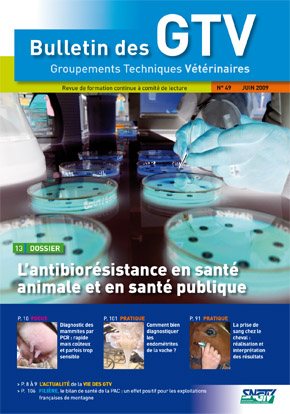Associations antibiotiques : intérêt et limites pour prévenir la résistance ou/et augmenter l’efficacité

Auteurs
Résumé
Le choix d’utiliser une association d’antibiotiques peut relever de plusieurs motivations, en particulier l’élargissement du spectre antibactérien, l’obtention d’une plus grande efficacité thérapeutique par la recherche d’un effet synergique permettant notamment d’améliorer l’action bactéricide, et la recherche d’une prévention de l’émergence d’une sous population de l’agent pathogène résistante ou de la sélection de mutants résistants. L’étude des associations in vitro, par la technique dite de l’échiquier, ou mieux en comparant la cinétique de bactéricidie des antibiotiques pris isolément et en association, est une base rationnelle pour rechercher l’éventualité d’une synergie susceptible d’améliorer l’efficacité d’un traitement antibiotique. Des essais cliniques sont en revanche nécessaires pour une validation de leur utilité in vivo. Ils sont cependant peu nombreux en médecine vétérinaire. Différent exemples, s’appuyant surtout sur des études in vitro, montrent que de nombreuses associations sont susceptibles de permettre d’accentuer significativement l’action bactéricide par rapport aux antibiotiques testés isolément. Des exemples, essentiellement empruntés à la médecine humaine, montrent que certaines associations permettent effectivement de limiter l’émergence des résistances. Les exemples concernent surtout les fluoroquinolones, pour lesquelles certaines associations, face à des bactéries peu sensibles et/ou développant facilement des résistances, peuvent permettre notamment d’abaisser significativement la concentration prévenant les mutations. Mais avant d’envisager l’utilisation des associations en thérapeutique vétérinaire, peut être faut-il s’interroger sur la façon dont les traitements en monothérapie sont réalisés, sachant que leur optimisation en intégrant les paramètres PK/PD dans la prescription des antibiotiques est déjà à même de prévenir une majorité des échecs thérapeutiques observés.
Abstract
The choice to use an antibiotic association can be based on several motivations: the widening of the antimicrobial spectrum, obtaining a greater therapeutic effectiveness due to a synergistic effect which can improve bactericidal action, and seeking to prevent the emergence of resistant sub-populations of the pathogen or the selection of resistant mutants. The in vitro study of associations, through the technique known as the “chess-board”, which compares the bactericidal kinetics of antibiotics taken separately and in association, is a practical way to find the synergy likely to improve the effectiveness of an antibiotic treatment. Clinical trials are also necessary to validate their utility in vivo (notwithstanding a scarcity of clinical trials in veterinary medicine). Different examples from in vitro studies show that many associations are likely to significantly improve the bactericidal action when compared to antibiotics tested separately. Specific examples from human medicine, show that certain associations make it possible to limit the emergence of resistant bacteria. This is especially true for fluoroquinolones, which when used against non-sensitive bacteria or easily developing resistant strains, can significantly lower the concentration of the antibiotic, thereby preventing the mutation. In advance of adopting associations as a veterinary therapeutic, we must first consider the way in which monotherapies are carried out. For example, knowing that optimization of the antibiotic by integrating the PK/PD parameters in the antibiotic prescription may prevent a large part of the observed therapeutic failures.
Découvrez aussi nos formations
Bovin laitier · Bovin viande

